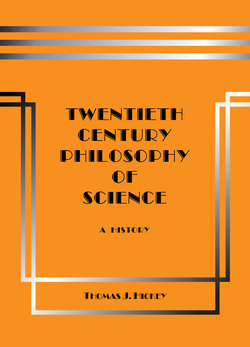Читать книгу Twentieth-Century Philosophy of Science: A History (Third Edition) - Thomas J. Hickey - Страница 55
На сайте Литреса книга снята с продажи.
3.24 Semantic Values
ОглавлениеSemantic values are the elementary component parts distributed among the meaning complexes associated with the descriptive terms of a language at a point in time.
For every descriptive term there are several semantical rules with each rule’s predicate describing some component parts of the common subject term’s meaning complex. A linguistic system therefore contains elementary components of meaning complexes that are shared by many descriptive terms, but are almost never uniquely associated with any single term, because all words have dictionary definitions analyzing the lexical entry’s component parts. These elementary components may be called “semantic values”.
Semantic values describe the most elementary ontological features of the real world that are distinguished by a language at a given point in time, and are the smallest elements in any meaning complex at the given point in time. The indefinitely vast residual reality not captured by any semantic values and that the language user’s semantics is unable to signify at the given point in time constitutes the empirical underdetermination of the whole language at the given point in time.
Different languages have different semantics and therefore display different ontologies. Where the semantics of one language displays semantic values not contained in the semantics of the other, the languages are said to be semantically incommensurable. Translation is therefore made imprecise.
A science at different times in its history may also have semantically incommensurable language, when the later version contains semantic values not contained in the earlier. But such incommensurability is rare, because it is routinely possible to resort to what Hanson called “phenomenal seeing”. And incommensurability does not occur in scientific revolutions understood as theory revision, because the revision is a reorganization of pre-existing information. When incommensurability occurs is it at times of discovery occasioning articulation of new semantic values due to new observations.
